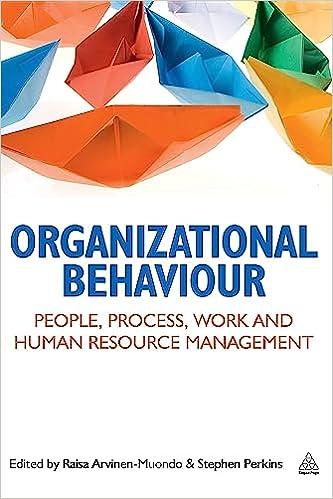The UKs NHS has been subject to considerable government-driven change in recent years. Many of these changes
Question:
The UK’s NHS has been subject to considerable government-driven change in recent years. Many of these changes have involved policy initiatives to ‘modernize’ the NHS and subject it to market disciplines. Foundation Trusts, which came into being under the Labour Governments (1997–2010), give NHS institutions a relatively high level of management autonomy, as well as a degree of independence from centralized financial control which makes this form of status highly desirable. Since Foundation Trust status is only granted to ‘successful’ NHS organizations, the pressure is on to improve standards and performance against national targets and outcomes, while increasing organizational scale and scope by taking over other institutions.
FT1 is a large, diverse NHS Foundation Trust which, at the time of writing, was on the acquisition trail. Directors and HR business partners at FT1 are experienced at managing integration and FT1 has developed a reputation for being able to convert what are by some considered ‘failing’ institutions into more successful bodies once they have been incorporated. Organization A, for example, one of FT1’s acquisitions, had been previously judged to be failing to meet NHS measures such as the four-hour target on admissions and reducing infection rates of MRSA. The organization was considered to have ‘cultural problems’. FT1 acquired organization A and embarked on a structured programme of integration.
Management capacity, national performance targets and cultural issues proved to be difficult challenges to address and FT1’s overall performance suffered as a result. FT1 had taken a total integration approach to organization A and the structure of the organization did not recognize the needs of local sites. In times of trouble, FT1 adopted a more command and control style of leadership to address performance. FT1 recognized that organization A required better local leadership to engage local communities and staff. This needed to be balanced against the requirement for corporate efficiencies in entering an era of austerity. How did this happen?
A significant factor was developing a new approach to leadership. FT1’s new CEO wanted both a coherent corporate strategy and also to do what was right for each hospital and its stakeholders. This can of course lead to tensions between local and corporate, but the CEO supported management teams in working through these. He set great store by building constructive relationships with stakeholders, especially the site management teams. The CEO encouraged site teams to create a local partnership, to get the hospital more connected to the people it serves. Indeed, the CEO sees his role as being a buffer to absorb some of the bureaucratic and other pressures on site managers to give them greater freedom to lead. The CEO recognized the need to strengthen the site leadership team at organization A, and to develop a new approach to responding to the needs of the local community it served. For the first three months in his new job, the CEO made himself visible in organization A and FT1 by going ‘back to the floor’ and encouraging anyone in the workforce, at any level who wished to, to come to see him. He also met with external partners. To the workforce the CEO came across as genuine and he demonstrated the need for an engaging approach to leadership and culture.
For the directors, as part of management in a Foundation Trust, the overall pace of activity increased and became more concentrated. They were therefore pleased to receive support from members of FT1’s organization development team, who provided 360-degree feedback, coaching and structured programmes such as ‘back to the floor.’ The focus was on building collegiate working among directors, then on building directors’ capability to lead and become champions of change. Directors and senior managers were also able to access other forms of leadership development which helped them see the benefits of being part of a bigger whole and better understand their role in delivering a national agenda and in building capability.
For staff in FT1 as a whole, the fast and demanding pace of change can be wearing. Employee engagement surveys suggest that, while most employees remained willing to ‘go the extra mile’, their overall engagement scores during the acquisition period were down on previous years. The CEO acknowledged the pressures people were under in his frequent blogs. At the same time, he let people know that they would have to work differently so that FT1 could continue to deliver its purpose to its stakeholders. Staff engagement is now improving and plans continue to develop an inclusive, engaging leadership culture. FT1 has recently acquired a community services organization and has put into practice the lessons learned from the acquisition of organization A. Local leadership and staff engagement have been fundamental and have had a positive impact on the success of the latest acquisition.
Discussion questions
● How would you assess the role played by the CEO’s role in leading this integration?
● What kinds of leadership does this case study demonstrate?
● What do you see as the key leadership challenges of this case study? How would you address them?
● What do you consider to be the strengths and limitations of the approaches taken to strengthen leadership at FT1 and organization A?
Step by Step Answer:

Organizational Behaviour People Process Work And Human Resource Management
ISBN: 9780749463601
1st Edition
Authors: Stephen J Perkins, Raisa Arvinen-Muondo





